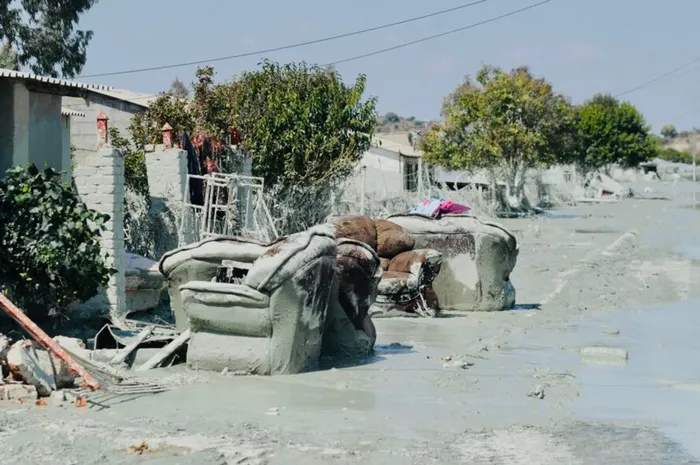More SA tailings catastrophes loom one year after Jagersfontein disaster

In this photograph taken last year, community members were trying to recover their belongings and clean their houses after a mining dam burst in Jagersfontein. Picture: Bhekikhaya Mabaso/ANA
South African communities living near mine tailings dumps are faced with potential disasters, one year after the collapse of the Jagersfontein slush dam, which led do the death of one person and destroyed livelihoods and infrastructure.
The Jagersfontein: One Year Later report by Bench Marks Foundation released yesterday found that there had been no official investigation into the cause of the disaster.
It is just a blame game, according to the research.
While officials have shifted blame on to each other, the plight of affected communities has grown worse. The Department of Mineral Resources has shifted blame for the collapse of the tailings damp on to the Department of Water Resources. Rights campaigners and researchers say this has left affected communities in Itumeleng and Charlesview in the Free State without help and closure.
“There has been finger pointing between politicians; we are calling for that people affected by this disaster be given due respect,” said Cindi Zithulele, a legal adviser at the Bench Marks Foundation.
He added: “We expect government to ensure there is regulatory compliance by players in the economic system, especially those associated with extractive sectors.”
The Jagersfontein disaster last year was not the first for South Africa. About 30 years ago, a tailings dam failure at Merriespruit killed 17 people, flooding neighbourhoods in the Free State sludge poured from the dam.
There are now fears that the poor design of South African tailing dumps and lax regulatory enforcement may result in further disasters. In fact, there are fears that two tailing dumps in Marikana are ticking time bombs.
“We are facing the same problems here in Marikana, especially with tailings dams number 6 and 8, and it is important that our community can learn and understand the consequences of poor management of tailings dams,” said David Ramohanoe, a community member from Marikana.
He added that most of the tailings dams in Marikana were “being managed by a company appointed by the mines” and that “the community is not involved” even though it stands to be impacted the most in the event of a failure or collapse.
“Communities must be able to ensure that they are involved in taking care of tailings dams. When mines close and relocate, communities will be faced with these issues,” he explained.
Zithulele said it was important for mines to do “no harm” and to “clean up the mess caused by their operations”.
The report on Jagersfontein recommends the total removal of the tailings from their current location and a halt to all mining and processing activity until this has been done.
It says the responsible company must provide the community with information and documentation, dismiss those who are responsible for the disaster, and fully compensate and give full restitution to the victims, as well as contribute to the development of a local economic development strategy for the community of Jagersfontein and Kopanong.
It notes that the R70 million in compensation is not enough as community members affected and around the dam that collapsed lost everything they had.
“The money allocated for correction of the situation is really not adequate. This tailing was problematic; a tailings is created to dry out slush from a mine but the slush from this tailing was not drying out and worse still, tailings should not be within 1 500m of communities,” said one researcher in the report.
Construction of the tailings dam on a slope with two towns below it and its proximity to key infrastructure such as dams and an electricity substation have all been criticised.
There has also been increased poverty, diseases among livestock and residents as the water in the area has high levels of dissolved solids from mining chemical processes.
BUSINESS REPORT